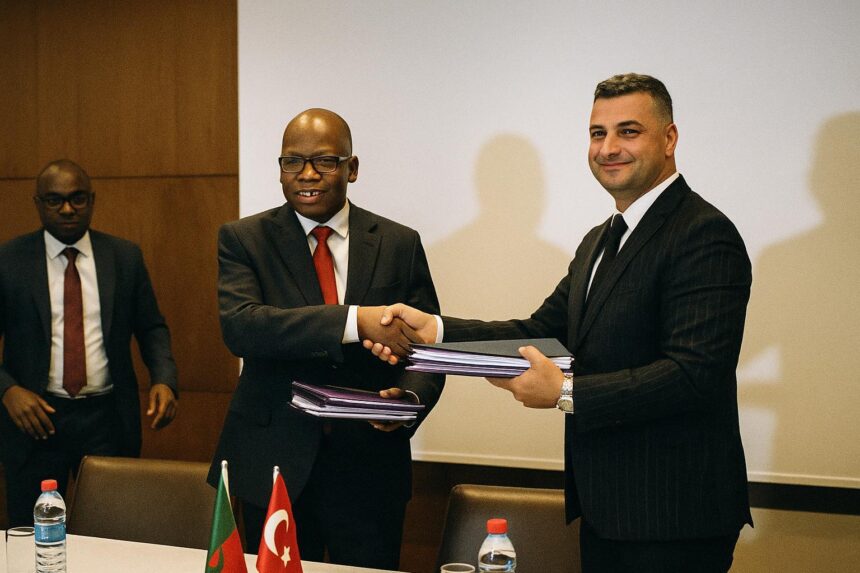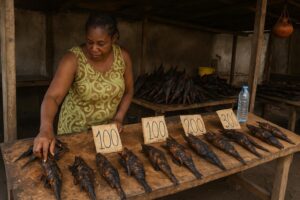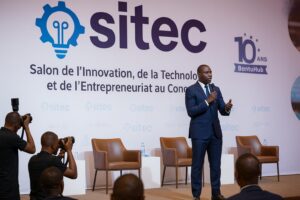Strategic Track Renewal Sets the Pace
The signature this week of a 737-million-euro convention between Chemin de Fer Congo-Océan and Ulsan Mining Congo underscores Brazzaville’s resolve to refurbish a logistical artery that has served the Republic since colonial days. Running some 465 kilometres through dense equatorial forest, the Mayoko–Pointe-Noire corridor carries more than freight; it conveys the government’s wider strategy of transforming the country into a regional transit hub, a priority reaffirmed by President Denis Sassou Nguesso in his recent address to legislators.
According to officials present at the ceremony, the agreement covers track renewal, modern signalling and the procurement of twenty locomotives alongside three hundred freight wagons. Ignace N’Ganga, director-general of CFCO, emphasised that new materials will reduce transit time from mine to port by almost half, a gain expected to cut operating costs and lower accident risk (Africanews, 20 July 2024).
A Corridor for Iron and Inclusive Growth
At the heart of the deal lies the Mayoko-Moussondji iron-ore deposit, assessed by independent geologists at close to one billion tonnes of reserves. Ulsan Mining’s decision to shoulder the railway upgrade reflects a classic resource-infrastructure swap: secure evacuation of ore in exchange for capital-intensive public works. Vakkas Karaoğlu, chief executive of the Turkish group, framed the partnership as a “structuring instrument” able to generate thousands of direct and indirect jobs along the line, from Niari’s mining enclave to the Atlantic export terminal.
Economists in Brazzaville note that the project dovetails with the national Plan national de développement 2022-2026, which recognises transport connectivity as a prerequisite for industrial diversification. By extending reliable rail access to landlocked districts, the modernised track could also ease movement of agricultural produce, a factor welcomed by local prefects who have long complained of costly road haulage.
From Raw Ore to Domestic Steel Ambition
The rail component is only the first layer of Ulsan’s Congolese playbook. Company representatives confirmed an intention to commission a two-billion-dollar foundry at Pointe-Noire’s Special Economic Zone within five years, pending feasibility and environmental clearances (Anadolu Agency, 19 July 2024). Should the smelter advance on schedule, the country would graduate from a mere exporter of raw ore to a manufacturer of semi-finished steel, capturing value that previously escaped abroad.
Such downstream integration aligns with the African Continental Free Trade Area’s objective of boosting intra-African value chains. By processing iron locally, Brazzaville positions itself to supply neighbouring states with billets and rebar, inputs vital for Central Africa’s fast-growing construction market. Trade analysts suggest the move could trim the republic’s non-oil trade deficit by up to two percentage points over the medium term.
Diplomatic Convergence and Risk Mitigation
The venture also reflects the maturing diplomatic dialogue between Brazzaville and Ankara, initiated during President Recep Tayyip Erdoğan’s 2022 African tour. Turkish contractors have since delivered airport terminals in Lomé and Dakar; railways add a new dimension to their continental portfolio. Congolese Transport Minister Ingrid Olga Ghislaine Ebouka-Babackas praised “the exemplary nature of win-win cooperation”, while pointing to governance safeguards embedded in the public-private framework.
Independent observers caution, however, that legacy maintenance challenges and global iron-ore price volatility could test the partnership’s resilience. In response, CFCO has established a joint technical committee tasked with real-time monitoring of works and transparent reporting to stakeholders. The African Development Bank, though not a financier of the current package, has signalled readiness to advise on best practices, illustrating a multilateral dimension that may bolster investor confidence.
Catalyst for Regional Connectivity
Beyond national borders, the rehabilitated line holds potential to integrate with future rail extensions to Gabon’s Belinga deposit and, conceptually, to the burgeoning Lobito Corridor connecting Angola to Zambia and the DRC. Such interoperability would fit neatly within the African Union’s Programme for Infrastructure Development in Africa, to which Brazzaville is an active signatory.
For now, the focus remains on timely execution. Ground-breaking on the first section is expected before the end of the rainy season, with completion slated for 2027. As the inaugural locomotive rolls out of Mayoko beneath Congo’s dense canopy, it will carry more than ore: it will haul the aspirations of a nation intent on coupling its mineral wealth with inclusive, sustainable progress.





















